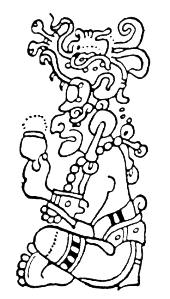Brief history of Guatemala
Early Mayan civilization and culture began to develop around 2000 B.C., all throughout the territory that we currently know as southern Mexico, Belize, Guatemala, El Salvador and western Honduras. The first period of Mayan civilization is referred to as the Pre-classic period and it occurred at the same time as the Golden Age of Greece and the conquests of Alexander the Great, lasting until around 250 A.D. The Classic period (following the pre-classic), was contemporary to the fall of the Roman Empire, and covers the years from 250 A.D. to 900 A.D. Following the classic period is the Post classic period from 900 A.D. up until the Spanish conquest of Guatemala in 1524.
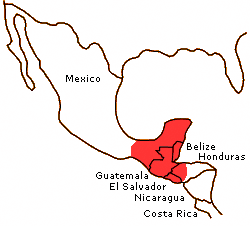
The Maya were considered one of the most developed human cultures of their time. They established trade routes throughout the area mentioned above, and also traded with other people in surrounding areas, e.g. with Teotihuacan. The most powerful Mayan cities during the height of Mayan civilization were Tikal, Calakmul, Caracol, Uaxactún, Yaxhá, Chichen Itzá, El Mirador, Nakbe, Copán, Palenque, Yaxchilán, and Kaminaljuyú. These cities were commercial and spiritual centers. They traded jade, obsidian, quetzal feathers and liquidambar resin from the highlands, seashells, fish and salt from the coast, and cacao, cotton, and macaw feathers from the lowlands. Each city was ruled by a k'ul ajaw, a king of god status, who ruled a united secular and religious realm.
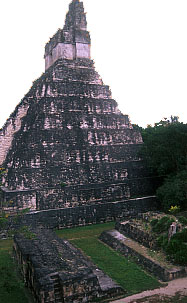
Centers of the ancient cities were characterized by plazas, temple pyramids, and ball courts, all designed to model the landscapes surrounding the cities. Pyramids were symbols of the mountains and home to the gods. Ball game courts were symbols for the valleys between the mountains and were considered the entrances to the underworld. The wide central plazas symbolized the surfaces of lakes, which were thought to be the surface of the underworld. Celebrations and sacrificial ceremonies were held on the stage of this sacred landscape (Freidel et al. 1993).
All of the ruins which can be seen today survived under the thick cover of the rainforest for centuries before being uncovered. Today they help us recreate the history of the ancient Maya, together with the arts and crafts and written testimonies carved in stone, written on paper and on pottery. The Maya used the most complex writing system of all American cultures up to their time. They also used an advanced calendar based on exact astronomic observations. Mayan mathematics included the concept of zero and agriculture was dominated by corn, which is still the main base of the Guatemalan diet today.
The late Classic period was characterized by many autonomous city centers that were often in conflict with each other, trying to divide up political territories. The mystery surrounding the collapse of the major Mayan sites in the 9th century continues today. One possible theory is the idea that the uncontrolled exploitation of resources by the Maya (slash and burn agriculture for example), long dry seasons, overpopulation, illnesses, wars, invasions and obstruction of trade routes, depleted the resources needed to support such a large population and caused the civilization to fold upon itself. Either way, what is known is that the main centers of the Classic Period were abandoned and the populations diminished at the end of this period and later on, in the Post classic period, only smaller towns were known to exist around lake Petén Itzá. During the late Post Classic period the central towns were Tayasal, at lake Petén Itzá, and Topoxté, at lake Yaxhá.
The long history of the Mayans ruling the majority of Mesoamerica ended with Spain's conquest of their lands. Spain entered to find new lands and resources to exploit and with their conquest they reduced Mayans to smaller populations and established their own cities on top of the Mayan ruins. Thus began three centuries of exploitation by the Spanish of the Mayan people, called the Colonial era, from 1524 to 1821. In 1524 Pedro de Alvarado began the conquest of the geographical area which is now known as part of Guatemala. He founded the first Spanish capital over the Mayan site of Iximché, the former capital of the Cakchiquel Kingdom. From then on Spain continued to conquer Mayan population centers and defeated the last significant Mayan population in 1697 in Tayasal, capital of the Itzaes of Petén. In one of Alvarado's battles Tecún Umán was raised to national hero status for his valiant fight against his Spanish intruders.
The name Guatemala was derived from "Quauhtemallan", which means 'place of abundant flowers' or from "Guauthemallan", which means 'place of trees' in the Aztec Nahuatl language. This name was given by the Tlaxcaltecas who came with Pedro de Alvarado to conquer this land. During the colonial time the capital of Guatemala changed location many times due to natural disasters. The capital "Guatemala de la Asunción", as it is today, was not named until 1776 after a severe earthquake which destroyed much of the previous capital, the city which is now Antigua Guatemala. During this time trading coalitions were established with Europe and the Catholic Church's influence was solidified throughout the whole country. Even though the Catholic Church tried to impose its beliefs on Mayans, some Maya codices and chronicles, with historical and religious information, were documented, preserved and even translated into Spanish by members of the very same Catholic Church. These members of the church had befriended certain Mayan leaders and were not comfortable forcing their religion upon the Mayans. In the 19th century various indigenous rebellions took place at different points in the country. Out of these rebellions rose another indigenous hero: Atanasio Tzul. He was made famous for leading a rebellion in the Quiché province of Totonicapán in 1820.
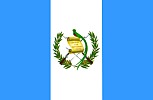

In 1821 the Modern Period began with the independence of Guatemala from Spain. A political union of all the countries from Central America took place from 1823 to 1839, known as Central American Federation. The central Government of it was situated in Guatemala, but finally all countries split like we know them today: Guatemala, El Salvador, Honduras, Nicaragua and Costa Rica. No national currency was declared until 1924. Then the "Quetzal" was introduced, owing its name to the national bird.
Since pre-colonial times the Mayans have always used the slash-and-burn agriculture and it is still the most common method for cultivation of corn, the base of the Guatemalan diet. During and after the Colonial period, Guatemala exported products which had been originally processed by the Mayan people, such as cacao and Spanish Red, which is a dye extracted from cochineal insects. At the end of the 19th century numerous German immigrants came to Guatemala and planted large areas with coffee for exportation. This is how coffee "fincas" or farms originated and today they are still producing some of the finest coffees in the world. The 20th century began with strong investments from the United Fruit Company to establish banana plantations in Guatemala. The company signed a contract with then president Estrada Cabrera to grow and trade bananas, and thus began a decade of strong influences of the banana trade in Guatemalan power politics.
In 1960 a civil war began that lasted for 36 years, taking the life of thousands of Guatemalans, and not officially concluding until the signing of Peace Accords between the government and guerilla forces in 1996. Since the Peace Agreements were signed, their implementation has been given close attention by the international community while the national government has swayed from strong intentions to implement agreements in the accords to a seemingly disinterested stand on the matter. In the face of these fluctuations the country has a long way to go to achieve the goals laid out in this important document.
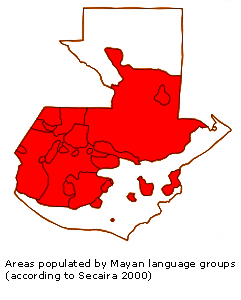
Guatemala's population is currently at around 13 million people, according to the national census. Guatemalan is a multicultural country: 23 Mayan ethnic groups, "ladinos" (a mix of Mayan and Spaniards), and minor groups, which are mainly the Xinca and the Garífuna. The Mayan population is around 60% of this number. They are settled mainly in the western highlands and in central Guatemala. Rural areas of Guatemala are a stark contrast to the urban centers. Most remote rural villages do not have paved roads, electricity or running water, and education is hard to access. The intensive use of the land in rural areas reflects the fact that agricultural production is still the main economic activity for the majority of the country's population. Some of the most prominent export products produced in Guatemala are: Cardamom, coffee, sugar cane, bananas, flowers and non-traditional goods like macadamia nuts and typical textiles and souvenirs. A significant amount of Guatemala's economy relies on tourism as the country's wildly diverse attractions, both natural and cultural, provide a wealth of attractions for visitors to the country.
One of the traditions in Guatemala which has endured centuries is that of the local markets. Markets are both trading centers and gathering sites and are generally operational only a couple of days each week, when people from a whole region will come to a town center to offer their wares and purchase basic necessity goods for their families. At the major markets one can observe local products and typical clothes from different areas and ethnic groups being bought and sold, since people from numerous small towns gather in the main markets at the same time.
References
Freidel, D., L. Schele & J. Parker (1993): Maya cosmos: Three thousand years on a shaman's path. Harpercollins.
Secaira, E. (2000): La conservación de la naturaleza, el pueblo Maya, y la espiritualidad en Guatemala: implicaciones para conservacionistas. PROARCAS/CAPAS/USAID, SUI, FCG, TNC, Guatemala.
